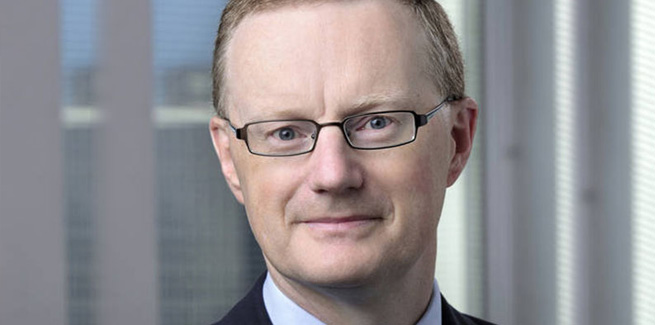In his address to the National Press Club, governor Philip Lowe said the official cash rate will be maintained at 0.10 per cent “for as long as is necessary”.
While he had previously flagged that the central bank does not expect to raise the cash rate for “at least three years”, Mr Lowe has now said that the cash rate could remain at its current record-low levels beyond 2024.
“So, the message is this: interest rates are going to be low for quite a while. The Reserve Bank is committed to provide the support the economy needs as it recovers from the pandemic.”
However, Mr Lowe has reiterated that the RBA board has “no appetite” for negative interest rates, and has underscored that it has “done as much as it reasonably can with interest rates”.
He repeated the RBA’s stance that before increasing the cash rate the board would like to see inflation sustainably within the 2 to 3 per cent target range.
“Meeting this condition will require a tighter labour market and stronger wages growth than we are currently forecasting,” Mr Lowe said.
“It is difficult to determine exactly when this condition might be met, but based on the outlook I have discussed today, we do not expect it to be before 2024, and it is possible that it will be later than this,” he said.
The RBA handed down its first cash rate decision for 2021 this week, holding the rate at the record-low 0.10 per cent. It also expanded its quantitative easing (QE) program by purchasing an additional $100 billion of bonds.
Despite the RBA holding the cash rate for the foreseeable future, Mr Lowe said in his address that in spite of the significant economic impacts of the coronavirus pandemic, the downturn was not as steep as he had initially feared, while the recovery has commenced earlier and has been stronger than the RBA had expected.
“Employment growth has been strong, as have retail sales and new house building. Across many indicators, including GDP, the outcomes have been better than our central forecasts and often better than our upside scenarios as well,” Mr Lowe said.
Monetary support to stay, more bond purchases coming
In its monthly meeting on Tuesday, the RBA board reviewed the monetary policy measures announced last year to soften the economic blow from the measures imposed to contain the coronavirus in Australia.
Presenting their conclusions in his address yesterday, Mr Lowe said the monetary policy package is working “as broadly expected” and added that it is supporting the economy.
“Together, the bond purchases, the term funding facility (TFF), the three-year yield target and the record-low cash rate have kept funding costs low for all borrowers and helped ensure that the banking system is able to provide the credit that is needed for the recovery,” Mr Lowe said.
“They have also resulted in a lower value of the Australian dollar than otherwise.
“Combined, the various measures have resulted in the RBA’s balance sheet increasing from around $180 billion to $330 billion and a further substantial increase is in prospect.”
However, Mr Lowe said the monetary support will “need to be maintained for some time to come”.
“It is going to be some years before the goals for inflation and unemployment are achieved. So, it is premature to be considering withdrawal of the monetary stimulus.”
Furthermore, the RBA will continue to purchase bonds issued by the Australian government and the states and territories once it has completed the current $100 billion program in mid-April, Mr Lowe said.
He added that the board considered three factors in reaching this decision: the effectiveness of the bond purchases, the decisions of other central banks, and “most importantly”, the outlook for inflation and jobs.
“With three months’ experience now, it is clear that the bond purchase program has helped to lower interest rates and has meant that the Australian dollar is lower than it otherwise would have been,” Mr Lowe said.
“So, it has worked. Australia’s government bond markets also continue to function well, and the available evidence is that further purchases would not be a source of market dysfunction.”
In addition, the TFF will be maintained as it is, Mr Lowe said.
“The board would consider extending this facility if there were a marked deterioration in funding and credit conditions in the Australian financial system. At the moment, there are no signs of this,” he said.
RBA ‘closely monitoring’ lending standards
Commenting on the level of household spending, Mr Lowe said the housing market is “bearing on household spending”.
Last year, Mr Lowe had discussed how falling house prices was one of the factors that had contributed to subdued growth in 2019. However, Mr Lowe said the dynamics in the housing market has changed, with prices recently increasing across most of the country.
“It remains to be seen how long this will continue, but sustainable increases in asset prices support household balance sheets and encourage spending through positive wealth effects. Higher housing prices can also encourage additional residential construction,” Mr Lowe said.
“But as housing prices rise again, we will be monitoring lending standards closely. We would be concerned if there were to be a deterioration in these standards, but there are few signs of this at the moment.”
[Related: RBA makes February cash rate call]

